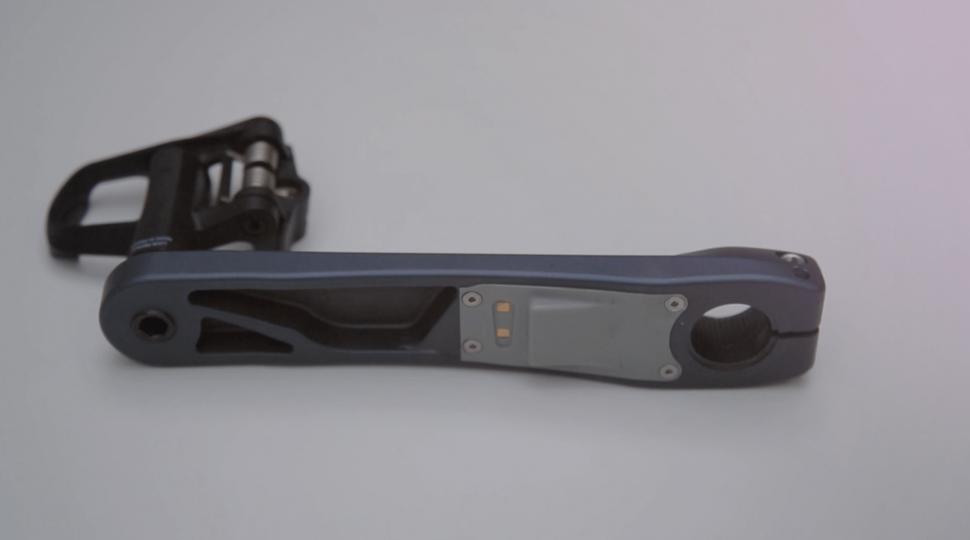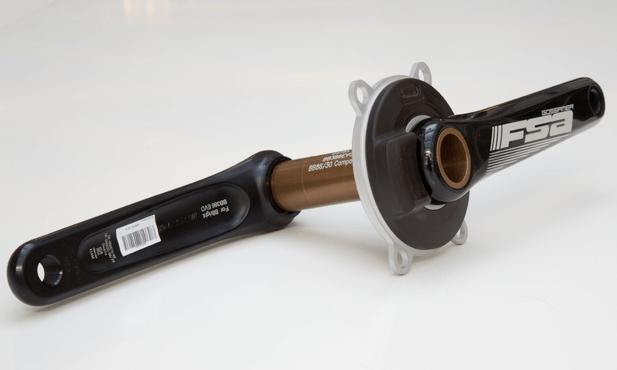- News
- Reviews
- Bikes
- Accessories
- Accessories - misc
- Computer mounts
- Bags
- Bar ends
- Bike bags & cases
- Bottle cages
- Bottles
- Cameras
- Car racks
- Child seats
- Computers
- Glasses
- GPS units
- Helmets
- Lights - front
- Lights - rear
- Lights - sets
- Locks
- Mirrors
- Mudguards
- Racks
- Pumps & CO2 inflators
- Puncture kits
- Reflectives
- Smart watches
- Stands and racks
- Trailers
- Clothing
- Components
- Bar tape & grips
- Bottom brackets
- Brake & gear cables
- Brake & STI levers
- Brake pads & spares
- Brakes
- Cassettes & freewheels
- Chains
- Chainsets & chainrings
- Derailleurs - front
- Derailleurs - rear
- Forks
- Gear levers & shifters
- Groupsets
- Handlebars & extensions
- Headsets
- Hubs
- Inner tubes
- Pedals
- Quick releases & skewers
- Saddles
- Seatposts
- Stems
- Wheels
- Tyres
- Health, fitness and nutrition
- Tools and workshop
- Miscellaneous
- Cross country mountain bikes
- Tubeless valves
- Buyers Guides
- Features
- Forum
- Recommends
- Podcast
TECH NEWS
 zwatt power meter.png
zwatt power meter.pngTeam Zwatt aims to make power meters affordable for everyone
Power meters have been getting much more affordable over the past few years, and the latest comes from Zwatt, which costs from €170 (about £142). There’s a catch: the company is recruiting a team of volunteer testers to help it through the final phase of real world development.
- How to choose a cycling power meter — a buyer's guide to your power training options
Team Zwatt is a Copenhagen-based startup and three years ago it started out with the aim to develop a low-cost but high-quality power meter. It wants to make power meters affordable for everyone, and has come up with a novel use for Kickstarter to get a team of cyclists together to help it through the final steps of development.
“We want to get more out of the data and bring down the cost to the point where all your bikes can have one,” the company proudly declares in a promotional video.
The key aim is to optimise the software algorithms in the three power meters it has developed.
On offer is a power meter at a really low price and in return you have to provide a minimum of 30 minutes of ride data every month, either on a trainer or out on the open road. The cost is split between a low hardware cost and a small monthly maintenance fee.
“Team ZWATT Kickstarter supporters become voting members on the closed forum and can influence product decisions like better support for oval chainrings, other arm lengths, max torque display, pedalling style assist, surface roughness logging, air time, landing impact logging, and more,” adds the company.
The power meter the company has developed both crank arm- and spider-based solutions, powered by a rechargeable battery and is fully waterproof. Bluetooth 4.0 LE and ANT+ are both supported so it’s compatible with a host of computers and sites like Strava and Zwift.
Zwatt claims the accuracy of its power meter is comparable to rival products, and that it will only improve as test data is gathered and compiled to help it to refine the complex algorithms in the software it has developed. Firmware can easily be updated via the smartphone app with no cables needed, it just uses Bluetooth.
It claims to release three power meter products. Zimanox is an arm-based power meter, Zpider uses the crank spider and Zpindle uses the bottom bracket spindle. Zimanox and Zpindle will measure just left leg power, Zpider will measure dual-leg power.
So how much does it cost?
The Zimanox costs from €170 plus a €4.46 monthly fee, while the Zpider costs from €270 plus the same €4.46 monthly fee. It is looking for 670,000 Swedish Krone and with 27 days to go has already hit kr581,285 from 381 backers, so it’s clearly hit a nerve with cyclists that want an affordable power meter and don’t mind being part of the test team.
There's a lot more detail and of course, you can back the product yourself at Kickstarter
David worked on the road.cc tech team from 2012-2020. Previously he was editor of Bikemagic.com and before that staff writer at RCUK. He's a seasoned cyclist of all disciplines, from road to mountain biking, touring to cyclo-cross, he only wishes he had time to ride them all. He's mildly competitive, though he'll never admit it, and is a frequent road racer but is too lazy to do really well. He currently resides in the Cotswolds, and you can now find him over on his own YouTube channel David Arthur - Just Ride Bikes.
Latest Comments
- Jogle 6 hours 24 min ago
Mystery over upturned campervan in Brittany...
- Barraob1 7 hours 8 min ago
Is that justification for murder?
- ktache 7 hours 16 min ago
I have recently obtained a SPD axle removal tool from eBay, ali, anodised in blue, wanted orange. I presume it's Chinese made, too much of a...
- ChasP 7 hours 17 min ago
I find it helps particularly with a brand new tyre that retains it's folded shape to seat it with an inner tube and leave for a while. You can then...
- Rendel Harris 7 hours 56 min ago
It's not available on the NHS but it can legally be prescribed by private doctors.
- ktache 8 hours 1 min ago
Was thinking about getting a Rohloff one, but then I got a Rohloff which made it a bit pointless. And, of course I only found about it when I was...
- pockstone 9 hours 18 min ago
If one's knuckles are several inches below one's ankles...?


Add new comment
12 comments
$189/€170 for the basic "stages/4iiii single side equivalent" (albeit with a crank made by stronglight, so it won't actually match either the 105,ultegra OR DuraAce in appearance (for those who care about such things... like me for example)) - plus $4.95/€4.46 per month IF you upload at least once, or double that if you don't...
so, TCO for the 2 year "development period" is a minimum of $307.80/€277.04 - for a power meter that is still "under development" and therefore can't really be relied upon to be consistent - it may be consistent to itself between revisions, but every revision of the firmware could affect the accuracy, and therefore how your current rides compare to historic. If it was once every 2 months, then you could probably get away with just doing a FTP test after each revision to reset your own baselines, but if they're patching once a week, once a day ??
and $307 isn't THAT much cheaper than $399 for the ready to ride 4iiii in a 105 variety (or the same price for a factory install on your own crank...)
Plus, they're only doing 172.5mm crank lengths at first...
Oh yeah, and Pay Now, Ship in December/Next February...
all things considered, I think I'm out.
Hi BigYin,
The 2 year period is more of an improvement rather than development stage. For example, the Zimanox has been tested for a long time now and it offers accurate measurements. Regarding the frequency of the updates, I can assure you they won't happen as often as every day or once a week. It takes more than that to gather enough data, analyze it and use it to improve the algorithms.
Yep, but we're also offering the above service as well.
Prior to the crowd-funding campaign we built the community of cyclists under the name Team Zwatt. When we asked them what size they would like to get, 70% said 172.5mm. That's the reasoning behind the decision.
Regarding Pay Now - Ship Later, it the direction we had to take as a company. We did try to do it differently than other companies though, by waiting with the launch until we had something worthy to show our backers. We're not asking for funding to start working on these power meters. The PMs exist, they work and they perform really good. We just needed a way to get them to cyclists :).
Hope this information helps.
Cheers,
Team Zwatt
I went for the other weird and wacky power meter out there.....the power pod. DC Rainmaker gave it good write up and it's swappable between bikes so I made my choice and I'm happy with it. It provides a lot of interesting data with the wind readings such as your effort speed in spite of the wind.
I imported it before the exchange rate crashed. Paid about £260 including import duties.
Price is good! Almost went for crankset... but I didn't like the idea that I will be substituting my Ultegra crankset with FSA Gossamer which is not better than 105
P.S. Another thing... every time you change your PF BB, you increase the chance that it will start creaking (at least in ALU frame)
I must admit to being a little sceptical as surely there's a floor price for Power meters. Just like GPS started off very as a very high priced item, prices are now affordable. I would guess the same will happen for Power meters as demand increases? As far as I can see, most of the Kickstarter offerings as based on a lower cost solution - I don't see how this is sustainable in the long run and whether these businesses will be able to support you 2/3 years down the line.
Nothing can be as bad as the Limits fiasco. What an utter clusterfuck that is. I feel sorry for anyone who fell for that.
I think Limits were very naive initially then bad at communicating & trying to shoot down people who cast doubts on their timescales. However, anyone following power meters will know how hard it is to get something to market. Just look at Brim Bros, bless 'em. I'm still interested in their product but ideally on Shimano cleats...
Going by what DCMaker has said i believe this is a safer bet although there are so many options out there now at lower prices (& reducing all the time) that would you take the risk on cost alone?
That looks seriously cool. You get a power meter for a very low price providing you agree to pay the fee for 24 months, after which the meter is yours. Very tempted...
I've read both the above links and there's nothing negative at all. DC Rainmaker gives it a very positive review.
Doesn't look so great:
http://www.bikeradar.com/forums/viewtopic.php?f=40013&t=13068188
http://www.dcrainmaker.com/2016/08/hands-on-team-zwatt-launches-subscrip...
Hey londoncommute,
We got in touch with the user on the Bikeradar forum and luckily his questions were answered.
Regarding DC Rainmaker's review, we chose to have him review due to his excellent ethics. He pointed out to both risks and challenges but also to the benefits of our endeavor and the good performance of our power meter. Our power meter's measurements compared to the PowerTap G3 and PowerTap P1 were very similar.
Cheers,
Team Zwatt
Heading over for a look, sounds tempting..
Has the shadow of Limits hanging over it
Edit: aw I'm out. My cranks are 175mm, and they're only doing 172.5mm to start with. Makes sense, but rules me out
Hey unconstituted,
Aw, sorry to hear that. But we have gotten a lot of interest in the 175 mm size. Maybe it will be something for the future? Don't hold us against that. We must first make sure the current campaign is a success and our backers get their power meters.
Regarding the aforementioned shadow, I can tell you that we waited with launching the crowd-funding campaign on purpose until we had something solid to show our backers.
Nevertheless, thanks for the interest!
Cheers,
Team Zwatt